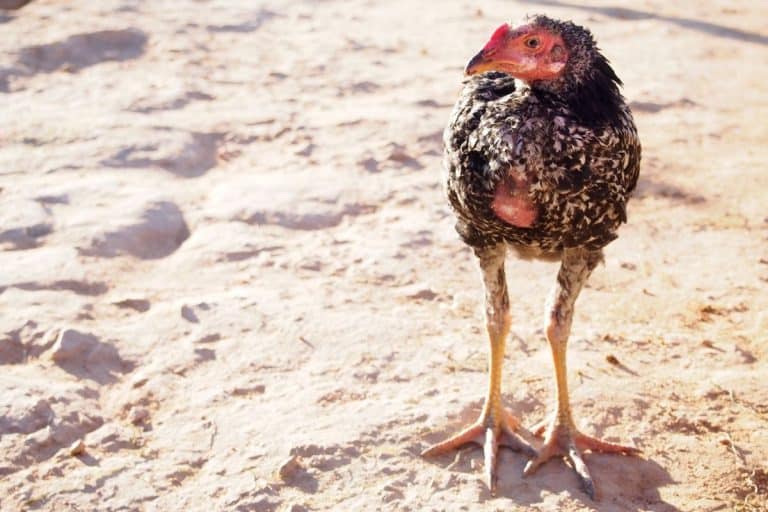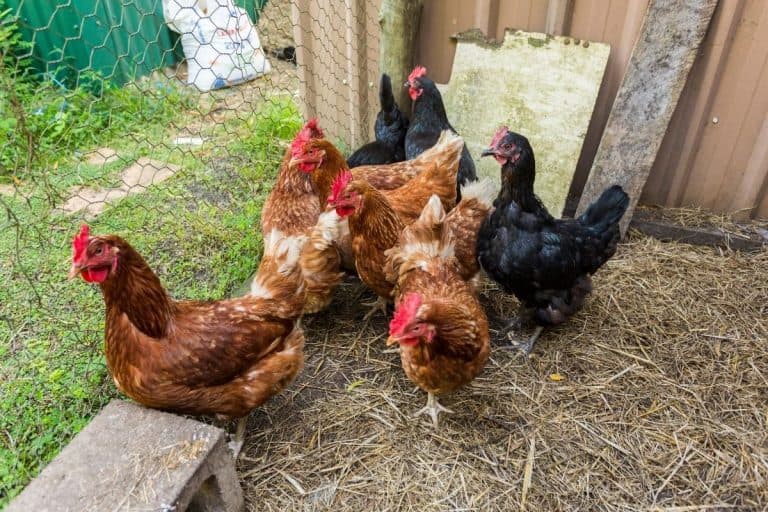The Importance of Fencing for Chickens: A Comprehensive Guide
Chickens are intelligent and social creatures that not only provide us with fresh eggs and meat, but also delight us, and it is our responsibility to give them the best possible lifestyle. Apart from offering chickens a healthy diet, fencing is something that should not be overlooked by the chicken owners.
In general, fencing is advised for all chickens, although it serves a different purpose for free-range chickens. Fencing not only protects chickens from predators, but also keeps them confined to a desired area, so they don’t roam around in the neighbor’s yards causing a nuisance.
Fencing is a broad topic in poultry, and there are several key considerations to make before placing a fence for your chickens. This blog post is a comprehensive guide on why chickens need fencing and how it benefits them, as well as some important guidelines to remember when putting up a fence for your chickens, so keep reading.
But before you dive into this topic, did you know I've got a page packed with my go-to chicken stuff? From the best feed to handy tools, it's all there. Don't you want the best for your flock? Check it out right here.
Differences Between Coop, Run, And Free-Range
Before we move on to chicken fencing, it’s important to understand the differences between a chicken coop, a chicken run, and a free-range. Understanding these differences will also assist you in determining the significance of fencing for various poultry constructions.
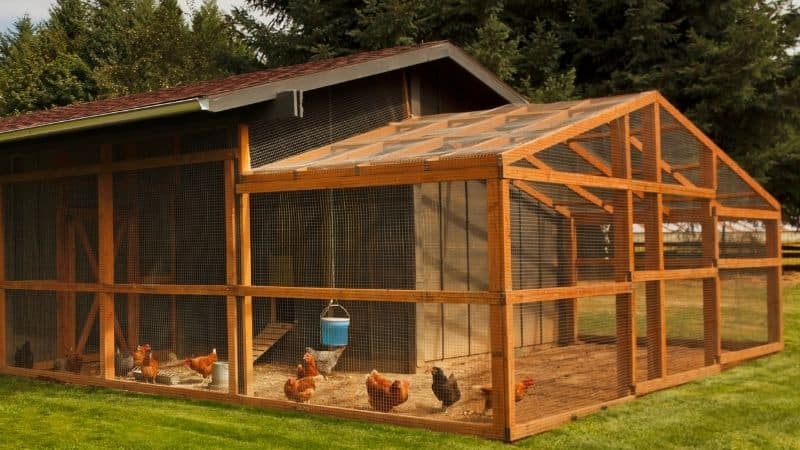
Chicken coop
A chicken coop is a structure designed to provide chickens with protection and a suitable living environment.
Chicken coops primarily consist of inside areas with perching bars or roosting bars where chickens can sleep at night and nesting boxes where hens can lay eggs. I advise providing at least 8 to 12 inches of space on the roosting bar for each bird.
A chicken coop’s main purpose is to protect the birds from predators, provide shelter from the elements, and provide good living conditions for the chickens.
Chicken coops are available in a variety of sizes and styles, ranging from small backyard coops for a few birds to bigger commercial coops that can hold hundreds of chickens.
The size and space of a chicken coop are mostly determined by the number of chickens and their breed. If the hens have access to the outdoors, five square feet of coop space per chicken is usually advised, but this might vary based on the breed and number of chickens.
Chicken coops also include vents on the sides for ventilation, temperature regulation, and the elimination of harmful gasses such as ammonia that may accumulate in the coop.
Related: 11 Essentials You Need To Install In Your Chicken Coop
Chicken run
A chicken run is an outdoor space enclosed with fencing. The purpose of a chicken run is to provide a space for birds to walk around, exercise, and forage for food.
A chicken run is usually attached to the coop and provides a safe place for the chickens to spend their time outside.
Ideally, I recommend providing at least 10 square feet of outside space for each chicken. So, if you have ten chickens, design a chicken run that is at least 100 square feet (9.29 square meters) so they can have ample living space and there is no overcrowding.
A chicken run can be built from a variety of materials, such as wood, wire mesh, or plastic netting, and it can be designed to accommodate a large number of chickens.
One thing to remember when creating a chicken run is to make sure the chickens have enough area to move around, that it is well-ventilated, and is safe from predators.
A chicken run is a great addition to your poultry setup since it allows your chickens to get some fresh air while keeping them contained in a small area where they cannot destroy plants or cause a nuisance. Chickens kept in the chicken run lay eggs in the coop’s nesting boxes rather than lying around the yard.
Free range
Free-range chickens are permitted to roam freely outside without being confined by fencing. The only fence that may be present is one used to mark the property.
Chickens are free to wander the entire property, eating and foraging everything they come across. There are various advantages to free-range chicken rearing, but there are also some disadvantages.

The ideal stock density is 50 chickens per acre of land, however depending on the breed, size, weather, and farm economics, you can fit a maximum of 100 chickens in one acre of land. Because free-range chickens have more living space, they are less likely to contract certain diseases.
Free-range chickens are also closer to nature, with access to fresh food, grass, and greens, as well as the opportunity to take dust baths on a regular basis.
However, free-ranging has drawbacks, such as an increased risk of predator attacks on the chickens due to the absence of a fence for protection. I would suggest getting a trained guard dog to safeguard your chickens on a large property from thieves and predators.
Poisonous plants and weather conditions are two other potential threats to free-range chickens. I would recommend that you construct some sort of shelter so that chickens can shield themselves from the elements during heavy downpours, hail storms, or snowfall.
Wait, I have some recommendations for you!
Before you go any further, I want you to take a look at some of the recommendations I've handpicked for you. I think these are essential items you should have for your chickens flock. You can check them out and buy them directly from Amazon.
 | 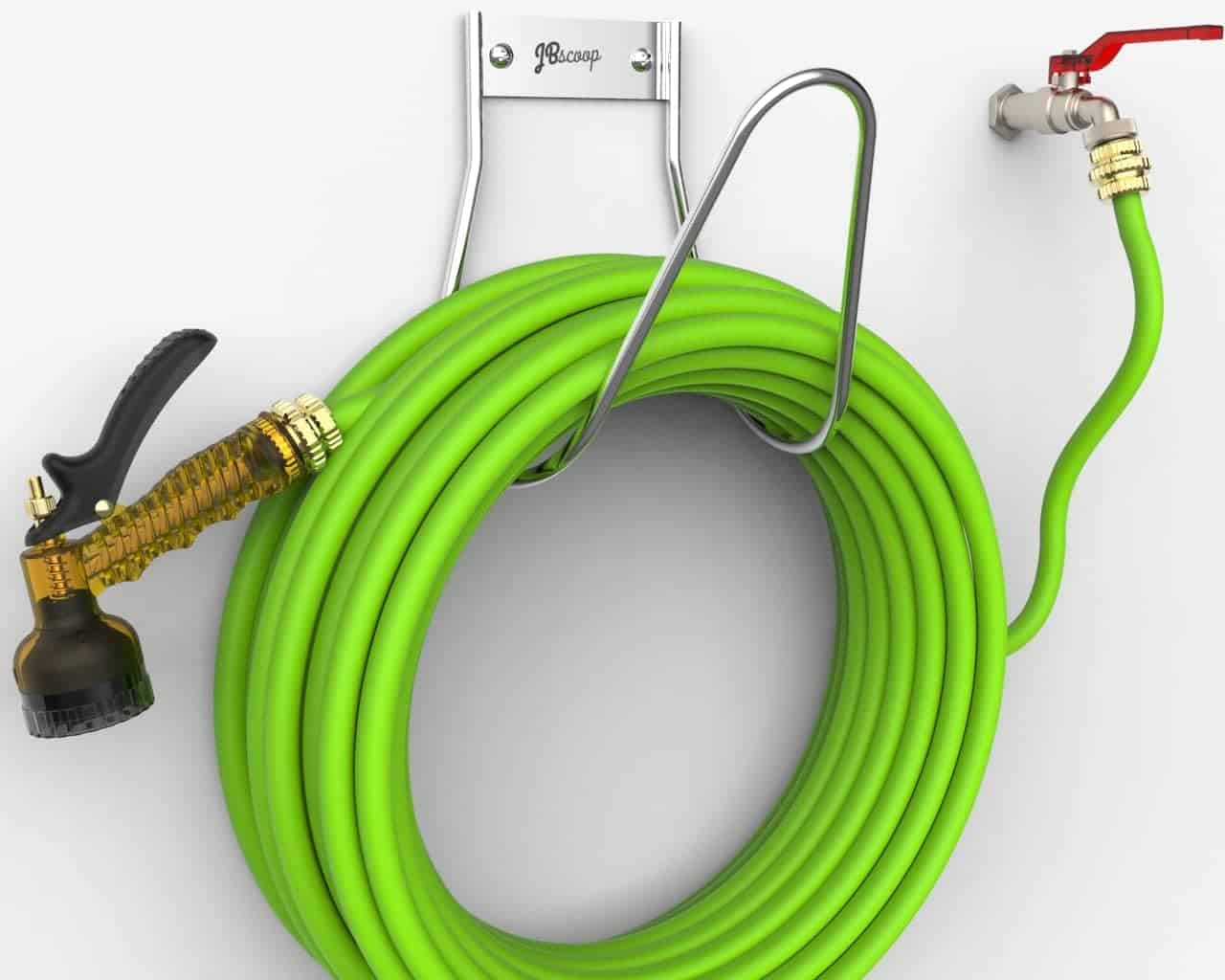 | 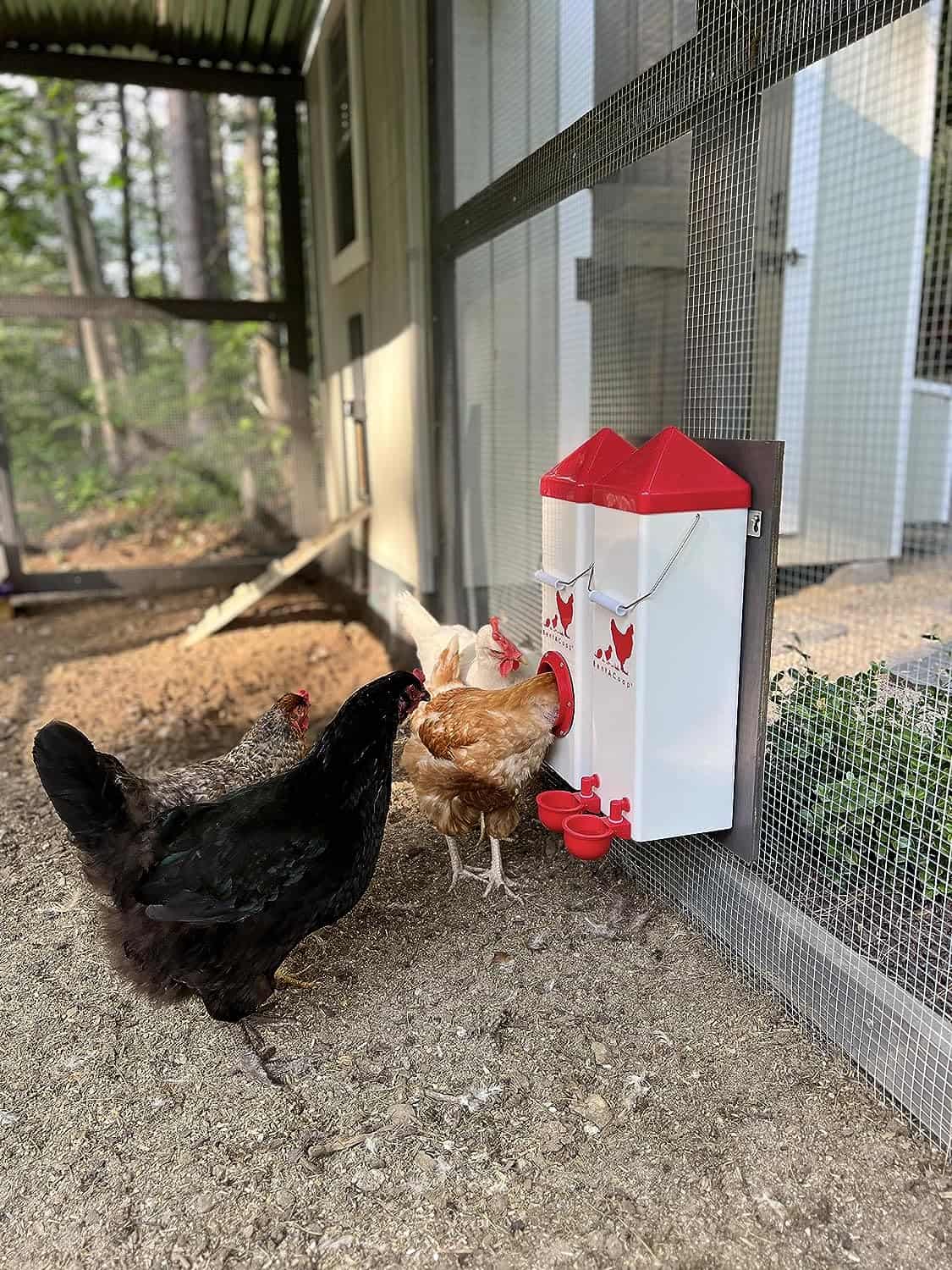 |  |
| Essential accessory for your coop | No more tripping over hoses! | Predator protection made easy | Comfort + style is possible |
6 Benefits Of Chicken Fencing
The following are some of the benefits of chicken fencing:
Protection against predators
The primary benefit of a chicken fence is protection from predators such as foxes, raccoons, bobcats, weasels, and others.
A strong and solid fence can help keep predators away from chickens, allowing them to live a happy, stress-free life.
Related article: What Usually Kills Chickens? (The 8 Most Common Reasons)
Containment
One significant advantage of having a fence is that your chickens can be kept restricted to a certain area. This decreases the chance of injuries because your chickens cannot roam on rooftops or on roads.
Fencing also prevents chickens from entering your neighbors’ yards and causing a nuisance. Fencing is going to keep your plants and grasses from being devoured by chickens if you are a plant lover or grow vegetables in your garden.
The landscaping of your backyard will also not be affected when chickens are confined to a single location.
Reduced risk of disease
Fencing reduces the likelihood of disease transmission in chickens by keeping them away from wild birds and animals.
Many wild birds and animals carry parasites and diseases that may seriously impact the health of your chickens, so installing a fence can help reduce the risks.
Related article: The 9 Most Common Diseases in Chickens (Symptoms, treatment)
Better foraging opportunities
Chickens enjoy foraging for food, and providing them with a designated fenced area for foraging keeps them physically and mentally healthy while also protecting your garden.

Improved egg production
Chickens can easily get stressed out, which can negatively affect their egg production.
Having a fence gives chickens mental satisfaction and a sense of protection, and they feel protected, lowering stress.
Rather than being concerned about their safety, they can focus on feeding and being happy, which improves egg production.
Related article: How Many Chickens For a Dozen Weekly Eggs? (+Tips to improve)
Better aesthetics
A well-designed poultry fence can improve the aesthetics of your backyard or farm. If you want your poultry area to seem clean and organized, consider installing a fence.
Chicken fences come in a variety of designs and styles, and you may also personalize them to your liking.
Good Practices For The Chickens Fencing
The following are some useful practices or guidelines to keep in mind while constructing a chicken fence:
Type
There are many different types of chicken fences available, but before you choose one, consider the following factors:
- Which breed of chickens do you have
- Age of your chickens
- How long do you want the fence (temporary or permanent)
- What kinds of predators are there in the area?
- The climate in your area
- Space available
The following are common types of fences for chickens:
- Chicken Wire
- Rabbit Cage Wire
- Chainlink Chicken Fencing
- Safety Chicken Fence
- Electric Poultry Fencing
- Aviary Netting
Height
The height of a chicken fence is usually determined by factors such as the predators in the area and the breed of chickens, as certain breeds, such as Ancona and Leghorns, are excellent flyers and can easily escape from short heightened fences.
A chicken fence should be at least 6 feet (1.8 meters) tall. However, an electric fence can be as low as 4 feet (1.2 meters).
Burying
Burying the fence in the ground from the button is a critical step that most chicken owners overlook. It is mostly used to keep predators from digging beneath the fence, particularly foxes and raccoons.
I recommend burying the fencing at least 6 inches to 12 inches deep, depending on the ground’s condition. If you’re worried about predators burrowing beneath the fence, you can dig as deep as 2 feet (0.6 meters).
Instead of burying the fence, if the ground is very hard or very soft, you can utilize the apron of the fence that extends outward from the base of the fence by placing heavy objects on it so predators can’t lift it from the bottom.
Gates
For simple access, gates are an excellent addition to the chicken fence. To prevent predators from entering the chicken area, they should be secure and kept closed at all times. For further security, locks can be installed.
Regular inspection and cleaning
Inspect the fence on a regular basis for any damage or signs of wear and tear, and repair any issues as soon as possible. Regular maintenance of electric fencing is required to keep everything running smoothly.
Whenever there is a storm, you must properly inspect all of the fences to ensure that there are no breaks caused by fallen objects. Keep the area around the fence clean and free of debris and overgrown vegetation that could provide hiding places for predators.




